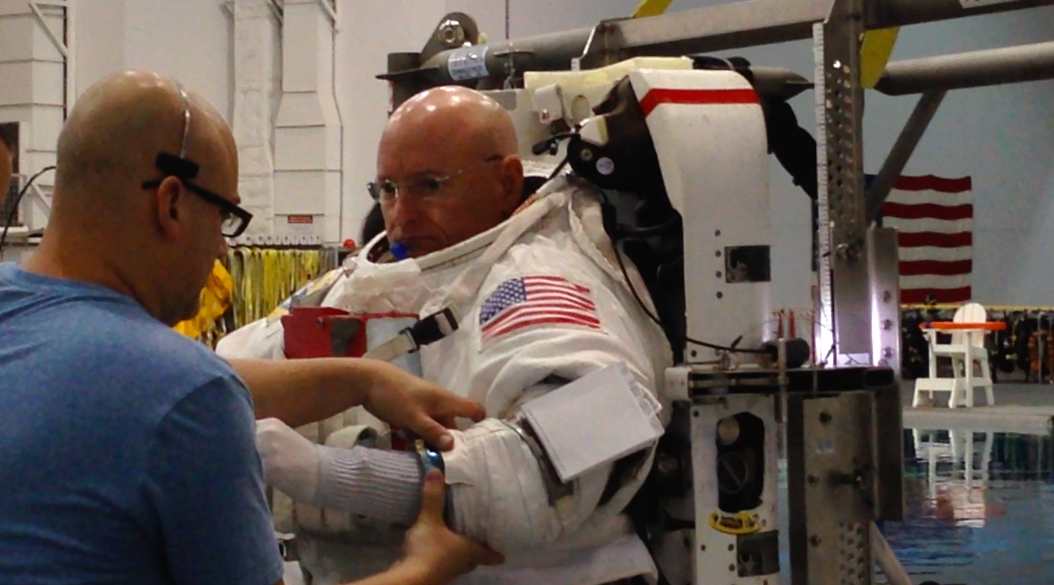It’s been a busy year up in space.
While the public’s image of what goes on aboard the International Space Station (ISS) may be mostly superb photos of Earth or Christmas stockings hanging over doorways, let’s not forget that there’s a whole lot of work being done by the rotating cast of six spacemen and spacewomen above the atmosphere every day.
Given that the ISS, which first opened for business on Nov. 2, 2000, is an international research platform, it’s no surprise that what goes on there is rigorous. To begin with, according to a video posted today by NASA, there were more than 300 investigations performed aboard the space station in 2014, amounting to 3,575 hours of research.
One crew, the astronauts from Expedition 40, set a new world (universe?) record, logging 82 research hours in a single July week. Currently, Expedition 42 is on board the ISS.
Among this year’s research projects are those testing how Robonaut, a two-armed humanoid robot “with the versatility and dexterity to manipulate hardware, work in high-risk environments, and respond safely to unexpected obstacles” performs in space; and Seedling Growth-2, part of the Seedling Growth Experiment series, which is attempting to study “the effects of gravity and different light sources on cell growth and proliferation.”
Yet, even as the many astronauts and cosmonauts aboard the ISS did all that work, they also spent quite a bit of time as a welcoming committee for a series of robotic spacecraft. During 2014, nine unmanned cargo craft arrived, including four Russian Progress ships, two SpaceX Dragons, two Orbital Sciences Cygnuses, and the European Space Agency’s final Automated Transfer Vehicle.
There was also a lot of walking around in space. In total, NASA said, 11 different astronauts completed seven spacewalks.
Lest we think that those in space will rest on their laurels in 2015, NASA wants us to know that will hardly be the case. On the books for next year are three planned U.S. spacewalks and the first year-long crew project, when NASA astronaut Scott Kelly and Russian cosmonaut Mikhail Kornienko become what’s known as the One Year Crew, a project to study space’s effect on the human body over time.
The Americans and the Russians plan to compare how time in space differs from time on Earth. In part, they’ll do that by looking at how Scott Kelly’s time aboard the ISS affects his body and contrasting that with how his identical twin, Mark Kelly — himself a former astronaut — fares on terra firma over the same timeframe.



